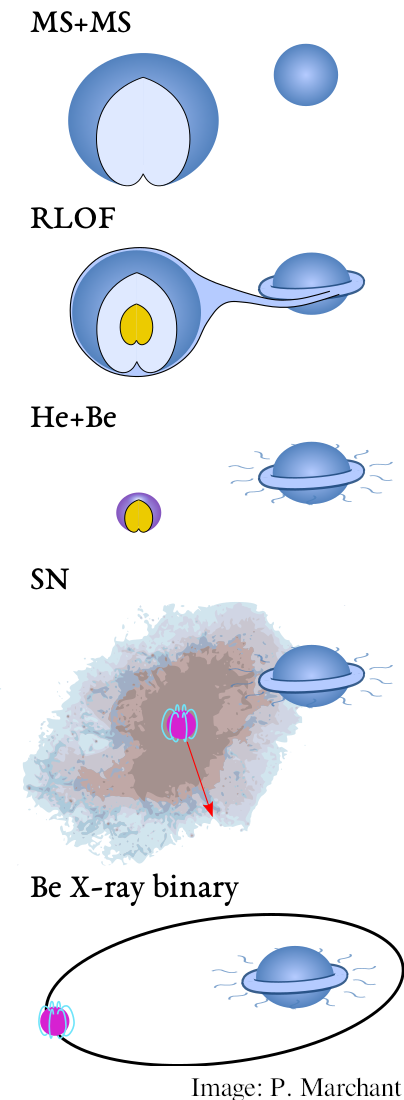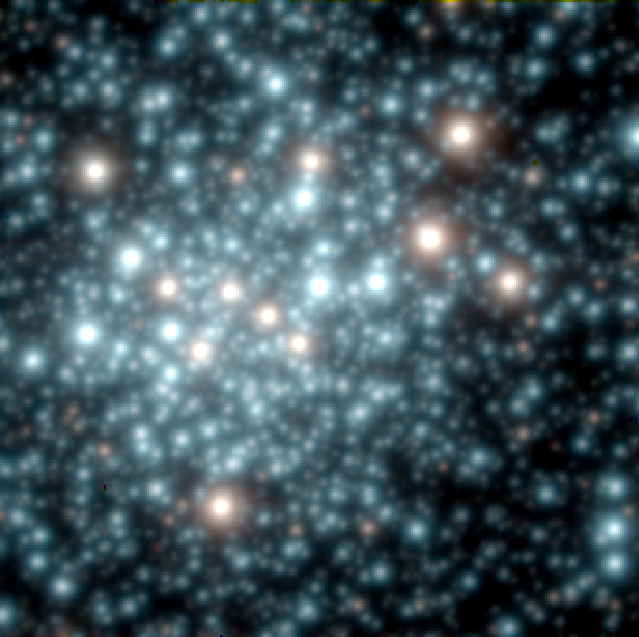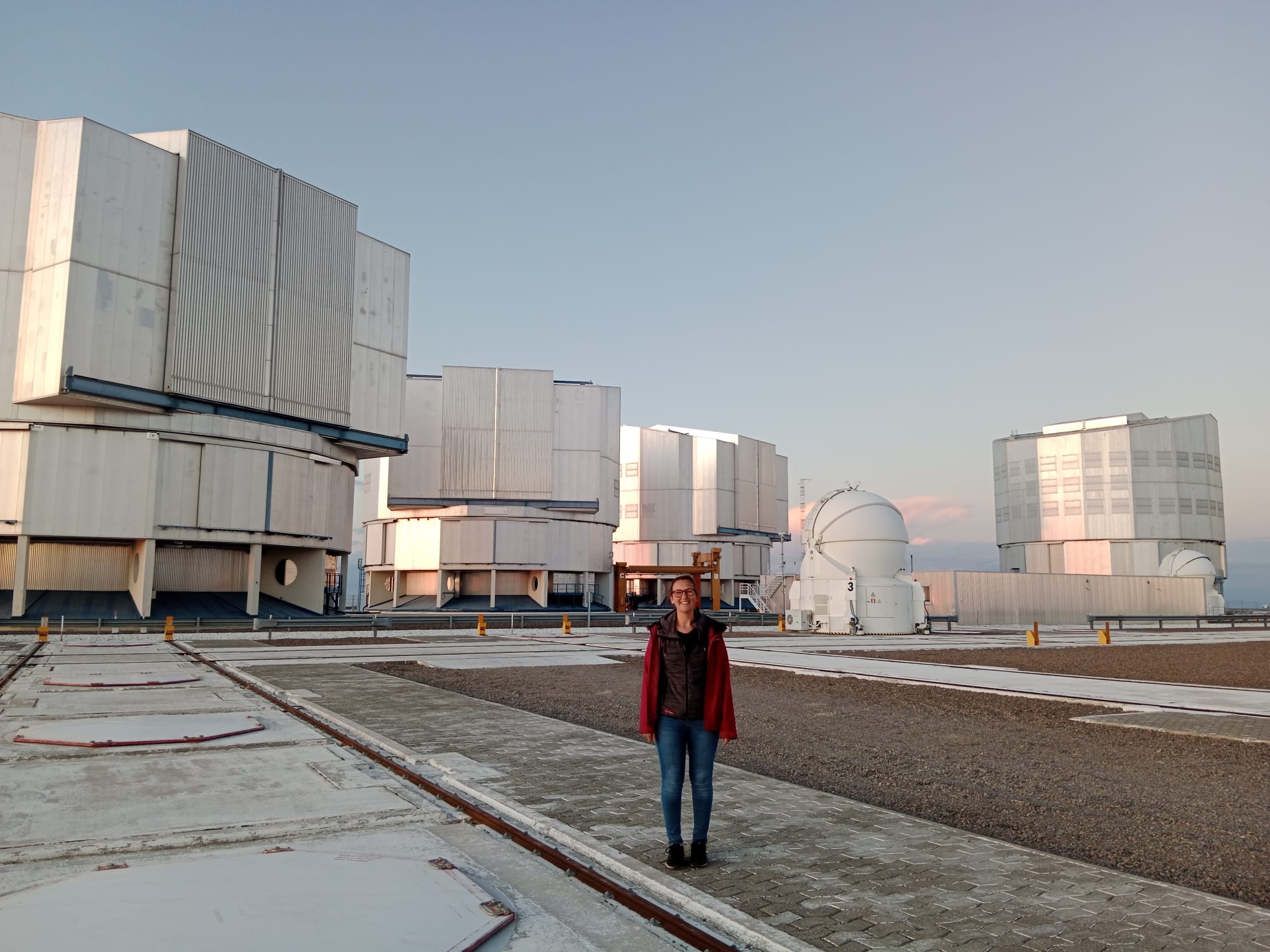
Julia Bodensteiner
Assistant professor (UvA)
Springer Thesis
In Summer 2022, my PhD thesis was selected to be published as part of the 'Springer theses', a book thesis to recognize outstanding PhD research. This monograph, entitled "Observational imprints of binary evolution on B- and Be-star populations" summarizes the main findings of my PhD, in which I used observations, mainly optical spectroscopy, to detect and characterize products of binary interactions.
The Springer thesis can be found here.

Research Interests
Massive stars
are cosmic engines driving the evolution of their entire host galaxies.
Stellar evolution
predictions serve as main ingredient for numerous other astrophysical disciplines.
Stellar multiplicity
strongly impacts the evolution of all components of a multiple system.
Binary interaction products
are direct probes of the outcome and the physics of binary interactions.
Ongoing projects
Investigating the potential binary origin of Be stars
Using high-resolution multi-epoch spectroscopy of > 150 classical Be stars, I want to investigate their multiplicity status.
About 20% of the massive galactic B stars are classical Be stars, observationally classified as such because their B-star spectrum is dominated by strong emission lines. While it has been shown that the formation of a circumstellar decretion disk, in which the emission originates, is linked to fast rotation of the central star, the origin of the rapid rotation remains unclear.
Different channels for the origin of the Be phenomenon have been proposed. One of them is based on binarity, proposing that Be stars are the mass gainers in post-mass-transfer binary systems. Apart from gaining mass, the stars also gained angular momentum, spinning them up to almost critical rotation rates. If the binary channel is the dominating one in the formation of massive Be stars, two clear and testable predictions emerge:
- there should be a lack of Be stars in close binary systems with main-sequence (MS) companions
- Be stars in binaries should have exotic companions such as envelope-stripped Helium stars, neutron stars and black holes
In a literature study of a sample of ~300 massive Be stars (with spectral types B1.5 and earlier) in the Milky Way, we found that there is a clear lack of reported Be stars in binary systems with close main-sequence companions. While the sample is inhomogeneous, this gives a first hint that the binary channel might be dominating in the formation of massive Be stars.

Hunting for post-interaction systems in the SMC cluster NGC 330
Based on adaptive-optics supported observations with VLT/MUSE I investigate the occurrence and properties of post-interaction binary systems .
When the integral field spectrograph MUSE mounted at UT4 of the VLT, Chile was equipped with a state-of-the-art adaptive optics module in summer 2017, it was possible for the first time to resolve the dense core of open stellar clusters in our neighboring galaxies, the Magellanic Clouds, and obtain spectra for its entire massive star population.
Using MUSE spectroscopy for NGC 330, a young, massive cluster in the Small Magellanic Cloud (SMC), we are able to provide a spectroscopic consensus of the massive star content of NGC 330.

We confirm that there is a surprisingly large number of classical Be stars, that is rapidly rotating stars that display characteristics Balmer emission lines arising in a circumstellar decretion disk. Based on their position in the color-magnitude diagram, they are prime candidates for binary interaction products. Using the multi-epoch nature of the MUSE observations, we identify binary systems in the cluster. We find that the current binary fraction in NGC 330 is significantly lower than in young stellar cluster.
The RGB image shown here is constructed from the MUSE observations of NGC 330.
Awarded Telescope Time
Since 2017 ...
As a PI
VLT
five successful proposal (> 45 hours) using instruments like MUSE and UVES
VLTI
one successful monitoring proposal (8 hours) using GRAVITY
MERCATOR
100 nights with the HERMES spectrograph
As a Co-I
In 2023, we were awarded over 100 hours for the ESO Large Programme Binarity at LOw Metallicity (BLOeM, PI: T. Shenar), for which I act as delegate-PI. Using the multiplex capabilities of VLT-FLAMES, we aim to obtain multi-epoch spectroscopy of almost 1000 massive stars in the Small Magellanic Clouds.
Observing Experience
During my career, I got the chance to conduct my own observations as well as service-mode observations for the community myself:
ESO-VLT, Paranal, Chile
- 10 nights in 2023 (training run on UT1 and UT2)

Mercator telescope, Spain
- 10 nights in 2020 (remotely)
- 20 nights in 2019
- 10 nights in 2018
MPG/ESO 2.2m-telescope, Chile
- 11 nights in 2016
- 10 nights in 2015
I have vast experience working with high-resolution spectra as well as with integral-field spectroscopy. This was one of the reasons why I chose to work on SoXS, a new state-of-the-art spectrograph for the ESO-NTT, as my ESO duty work.